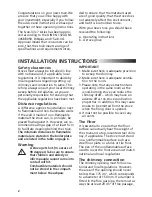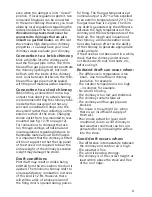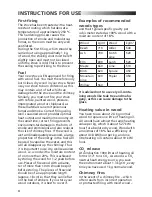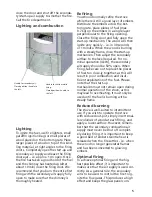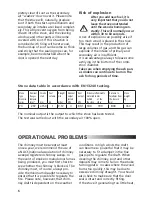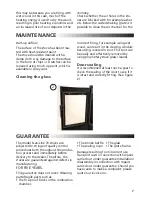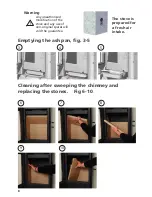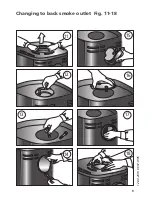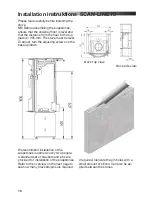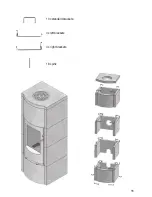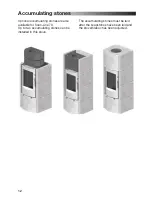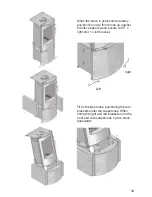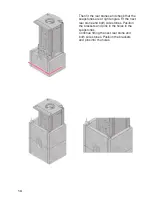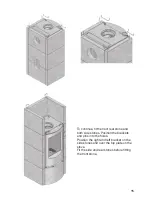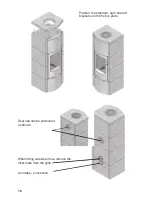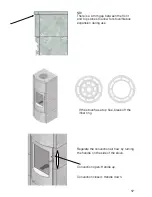
6
Stove data table in accordance with EN 13240 testing.
Stove
type
Scan-Line
series
Nominal
fluegas
tempera-
ture c°
Smoke
stub
mm
Fuel
volume
kg
Draught
min
mbar
Nominal
output
tested
kW
Heat
output
kW
Distance to flammable
materials in mm
behind at the
the stove sides
Distance to
furnitures from
the stove in
mm
Stove
weight
kg
70
237
ø150 1
0,12
4
83,1 160 190
800
450
The nominal output is the output to which the stove has been tested.
The test was carried out with the secondary air 100% open.
pletely clear of soot as the secondary
air “washes” down over it. Please note
that the stove will, naturally, produce
soot if both the start-up mechanism and
secondary air intakes are closed complet-
ely. This will prevent oxygen from being
drawn into the stove, and the viewing
window and other parts will become
covered with soot. If this situation is
combined with firing with wet wood,
the build-up of soot can become so thick
and sticky that the sealing rope can, for
example, become detached when the
door is opened the next day.
Risk of explosion
After you add new fuel, it is
very important that you do not
leave the stove unattended
until the wood is burning con-
stantly. This will normally occur
within 30 to 60 seconds.
A risk of explosion can possibly arise if
too much wood is placed in the stove.
This may result in the production of
large volumes of gas, and this gas can
explode if the intake of primary and
secondary air is insufficient.
It is an advantage always to leave some
ash lying in the bottom of the comb-
stion chamber.
Take care when emptying the ash pan,
as cinders can continue to burn in the
ash for long periods of time.
OPeRATIONAL PRObLeMS
The chimney must be swept at least
once a year, we recommend the use of
a NACS (national association of chimney
sweeps) registered chimney sweep. In
the event of smoke or malodorous fumes
being produced, you must first check to
see whether the chimney is blocked. The
chimney must, of course, always pro-
vide the minimum draught necessary to
ensure that it is possible to regulate the
fire. Please note, however, that chim-
ney draft is dependent on the weather
conditions. In high winds, the draft
can become so powerful that it may be
necessary to fit a damper in the flue
gas pipe to regulate the draft. When
cleaning the chimney, soot and other
deposits may come to fall on the smoke
turning plate.
In cases where the wood
burns too quickly, this may be due to
excessive chimney draught. You should
also check to make sure that the door
seal is intact and correctly fitting.
If the stove it generating too little heat,


